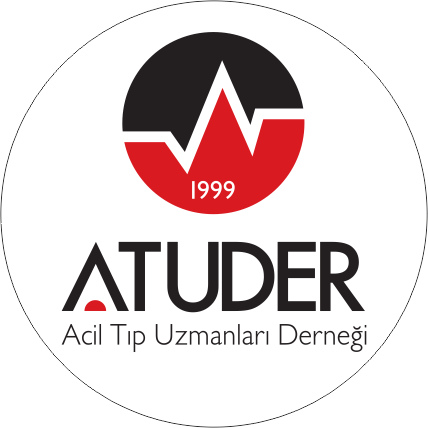ABSTRACT
Introduction:
Discharge rate of the patients from the hospital following cardiopulmonary resuscitation (CPR) is lower than the return of spontaneous circulation. The aim of this study is to investigate the predictive value of serum C-reactive protein (CRP) and cortisol on prognosis following adult cardiopulmonary resuscitation.
Material and Method:
Seventy patients who were admitted to emergency department involved in this study and were separated in to three groups. There were twenty six patients with acute coronary syndrome and were applied CPR in group 1, fourteen patients who were applied CPR with different diagnosis except acute coronary syndrome in group 2, thirty patients with acute coronary syndrome and were not applied CPR in group 3. Blood samples were drawn from a peripheral vein at the hours 0-4, 24 and 48 for analysing CRP and cortisol levels.
Results:
The CRP level at 0-4th hour in group 2 was significantly higher than the level in group 1 (p<0.016). The CRP levels at 24 and 48th hours were significantly higher in group 1 than the levels in group 3 (p<0.001). The CRP levels at 24 and 48th hours were significantly higher in group 2 than the levels in group 3 (p<0.001). There was no statistical significance in the groups 1 and 2, between the levels of CRP in the patients either who died or alive at 24 and 48th hours. The cortisol levels at 0-4, 24 and 48th hours were higher in group 1 and 2 than in group 3 (p<0.001). In all three groups the levels of the cortisol at 0-4th hours were significantly became lower through the hours 24 and 48 (p<0.01, p<0.016 and p<0.01 respectively). In group 1 and group 2 the levels of cortisol significantly lowered from the 0-4 hours to 24 and 48th hours (p<0.01, p<0.016) but not in the patients who died (p>0,016).
Conclusion:
The CRP levels+ in CPR applied patients were higher but there was no co-ordination in these increases. The levels of CRP might be altered by the coexisting diseases, the applied treatments and the developed complications. Cortisol levels during CPR and after CPR were increased in the initial period but lowered significantly within time. But this significant difference could not be shown in dead patients. This could be considered as a sign of a poor prognosis.



